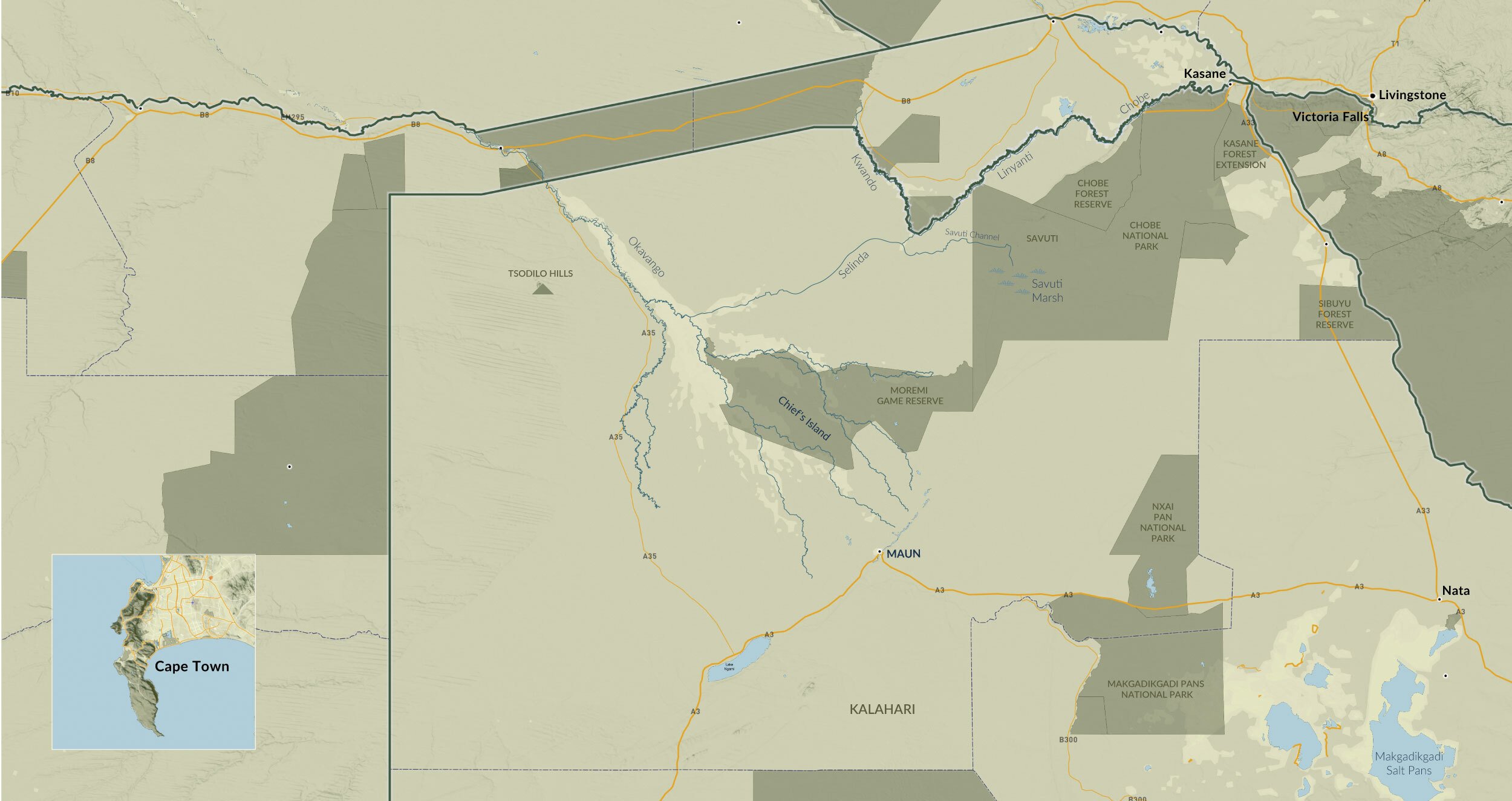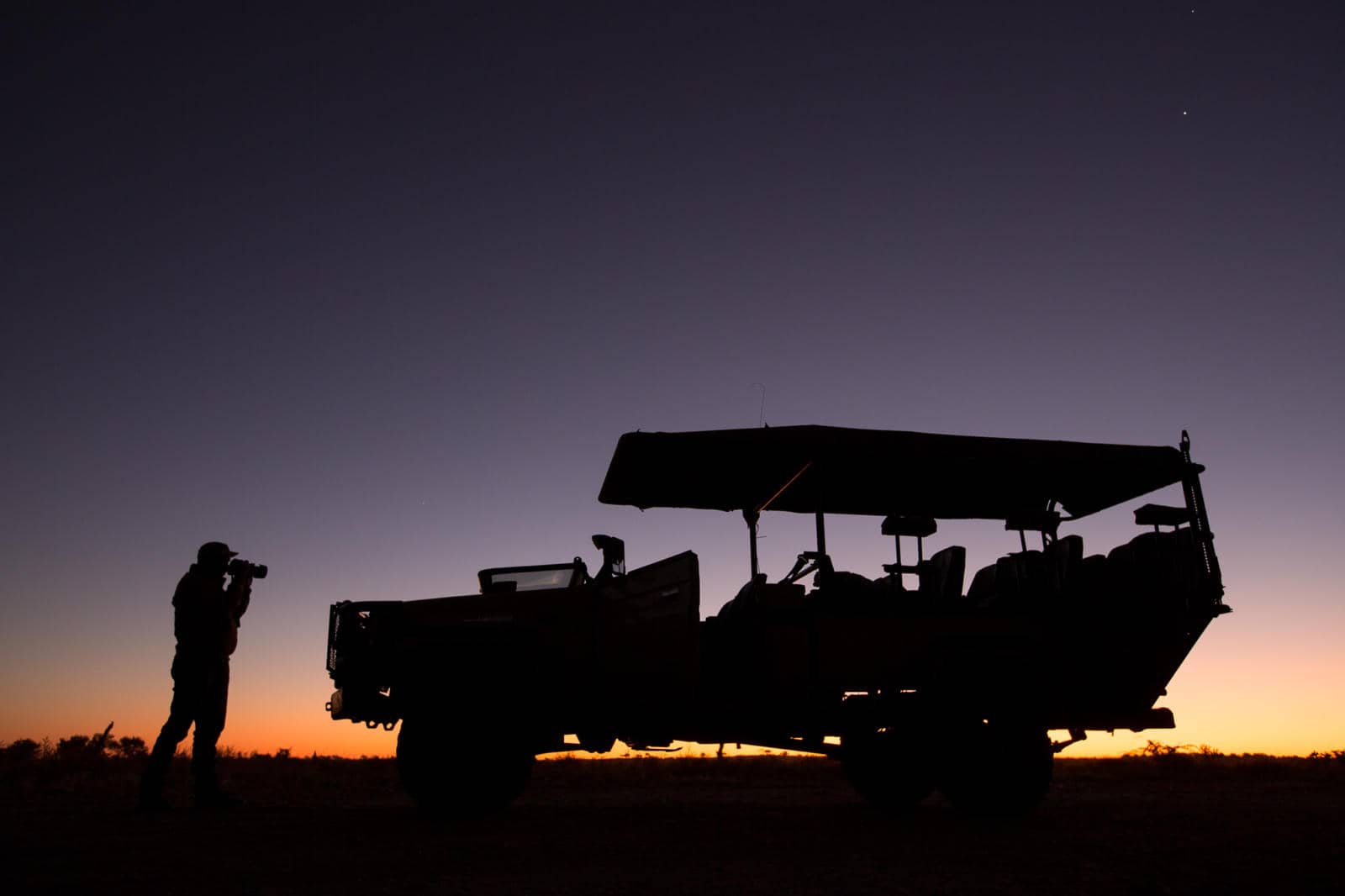This safari departs Maun by vehicle at 0800 hours and will collect you from your accommodation at this time for the drive into Moremi. Those with previous safari arrangements or arriving by scheduled flights will need to fly directly into Xakanaxa Airstrip after 14h00 hours for the guide to arrange a meet and greet for guests. The first three nights are spent in the Xakanaxa region where you will explore the surrounding wilderness on morning and afternoon game drive excursions.
This is a diverse environment with every type of mopane habitat being well represented during this drive from the towering cathedral woodlands of Xakanaxa to the classic climax mopane woodland and in the drier and harsher habitats, extensive stretches of scrub mopane. The San-ta-Wani region has scattered ephemeral water pans with large floodplains and camel-thorn woodlands. 40 km of the drive is in Moremi Game Reserve with a further 40 km in areas designated for wildlife management where animals roam freely to and from the Game Reserve.
A good day for raptors with African Hawk-Eagle, Gabar Goshawk, Shikra, Little Sparrowhawk, Dark Chanting Goshawk, Tawny Eagle, Lesser Spotted Eagle* and Steppe Eagle* all inhabiting the mopane and adjacent woodlands. Other birds common along this route includes most of Botswana’s hornbills including Red-billed, Southern Yellow- billed, African Grey, Bradfield’s and the Southern Ground Hornbills. A large number of brood-parasites may also be seen. Diederick Cuckoo*, Levaillant’s Cuckoo*, Jacobin Cuckoo*, Great-spotted Cuckoo*, African Cuckoo*, Common Cuckoo*, Shaft-tailed Whydah, Pin-tailed Whydah, Eastern Paradise Whydah, Greater Honeyguide, and Lesser Honeyguide.

